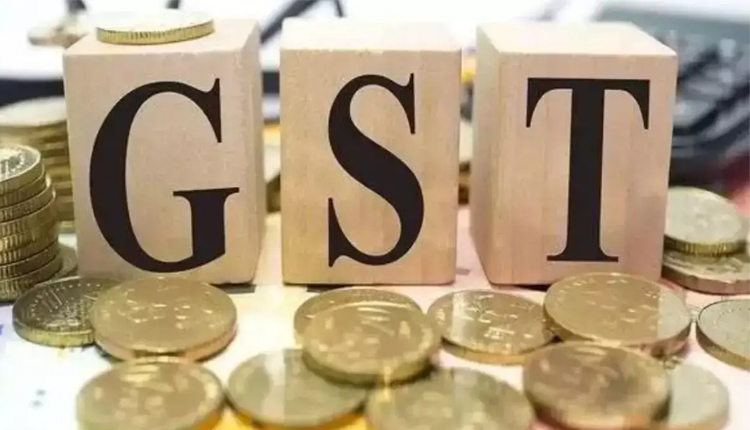New Delhi: In a move set to bring cheer to Indian households, the recent Goods and Services Tax (GST) reforms are poised to not only make daily essentials more affordable but also significantly curb retail inflation, according to a new report by State Bank of India (SBI) Research.
The revamped tax structure, dubbed GST 2.0, is expected to reduce retail inflation by 65–75 basis points in the fiscal year 2025–26, offering tangible relief to consumers grappling with rising costs.
The GST Council, in its landmark 56th meeting held on September 3, greenlit a sweeping overhaul of the tax framework, replacing the existing four-tier structure (5%, 12%, 18%, and 28%) with a streamlined two-tier system comprising 5% and 18% slabs.
Additionally, a special 40% tax rate has been introduced for luxury and “sin” goods like tobacco and pan masala, though these changes for tobacco-related products will be deferred. The new rates, effective from September 22, are designed to simplify compliance, boost consumption, and ease the financial burden on the common man.
A Win For Consumers And The Economy
The SBI report highlights that of the 453 goods impacted by the rate revisions, 413 have seen tax reductions, while only 40 face an increase. Notably, around 295 essential items — ranging from packaged food and medicines to toothpaste and shampoo — have been shifted from the 12% slab to either 5% or a nil tax bracket. This shift is expected to lower the Consumer Price Index (CPI) inflation for these goods by 25–30 basis points in FY26, assuming a 60% pass-through effect on food items.
The rationalisation of GST rates on services is projected to further reduce CPI inflation by 40–45 basis points, with a 50% pass-through effect on other goods and services.
Cumulatively, these changes could moderate retail inflation by 65–75 basis points over FY26–27, a development that SBI Chairman C S Setty described as a “citizen-centric evolution” of the GST framework. “The reduction in GST rates will make consumer goods cheaper, enhancing savings and spending capacity, which will help ease retail inflation,” Setty noted.
A Leaner, Meaner Tax Regime
The GST reforms have also slashed the effective weighted average GST rate from 14.4% at the tax’s inception in 2017 to 11.6% in September 2019, with projections suggesting it could dip further to 9.5% post-reform. This reduction, coupled with exemptions on life and health insurance premiums, is expected to improve affordability and expand coverage, particularly benefiting middle-class households. For instance, the removal of GST on insurance is likely to encourage higher sum assured policies and attract new buyers, bolstering financial security.
While the government estimates a net fiscal impact of ₹48,000 crore annually due to the rate cuts, SBI’s analysis paints a rosier picture, pegging the actual revenue loss at just ₹3,700 crore for FY26. This minimal loss, equivalent to a mere 1 basis point of the fiscal deficit, is attributed to robust consumption trends and a broader tax base. The report cites historical data, noting that past GST rate reductions have generated nearly ₹1 trillion in additional revenues, underscoring the potential for these reforms to spur economic activity rather than strain government finances.
A Structural Reform For Long-Term Gains
The SBI report emphasises that GST 2.0 is not merely a temporary stimulus but a structural reform aimed at simplifying compliance, reducing distortions, and fostering long-term revenue stability. By lowering taxes on essentials like cement, fertilisers, and automobiles, the reforms are expected to boost sectors like affordable housing and agriculture. For instance, Anuj Puri, Chairman of ANAROCK Group, noted that reduced GST on construction materials could cut building costs by 3–5%, potentially reviving demand in the affordable housing segment, which has dwindled from 38% of total sales in 2019 to just 18% in 2024.
As India gears up for the festive season, the timing of these reforms — slated to kick in just before Diwali — could amplify their impact, driving consumption and invigorating retail and manufacturing sectors. With retail inflation already at an eight-year low of 1.55% in July 2025, the GST rate cuts, combined with the Reserve Bank of India’s recent 1% repo rate reduction and income tax rebates, are poised to deliver a potent boost to economic growth.
Prime Minister Narendra Modi, who first hinted at these next-generation reforms during his Independence Day address, hailed GST 2.0 as a “double dose of development” for the nation. As households prepare to enjoy cheaper essentials and businesses adapt to a simpler tax regime, the reforms signal a promising step towards a more affordable and prosperous India.



Comments are closed.